NHK Boys' Drama Series
"The Mysterious Transfer Student"
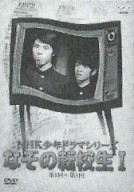
1975 / Amuse Soft
A TV drama series, aimed at children, that aired on NHK in the 70s and 80s. What is most memorable about them is the high-quality juvenile sci-fi drama adaptations of Taku Mayumura, Ryu Mitsuse, Moto Hagio and others, and despite the works in question being fantasy they all have a suppressed tone (feeling serious, like the old NHK), which gave them a unique feeling of being realistic but abnormal. The younger generation will probably never have heard of it, but maybe you'll understand what's interesting about it if I describe it as being like a middle schooler's larger than life diary with a sci-fi taste sprinkled on top. Siren's way of showing the story flow smoothly, starting with the exchanges between Kyoya and Miyako, must have been inspired by this... And anyone who is excited by the idea is quite old. (Kobayashi)

The Lovecraft Anthology
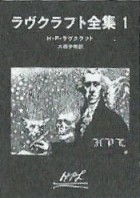
H.P. Lovecraft / Tokyo Sogensha
The master of strange and fantasy literature, H.P. Lovecraft, created a scructure of fantastical myths called the Cthulu mythos. The basic premise is that malicious gods - long, long ago the rulers of the earth, who had been sealed away - return in the present day, expanded upon by many writers after Lovecraft's death. Many of the former rulers are strange in appearance and themed around sea creatures, such as molluscs and cephalpods. Hanuda's name (a snake that sprouts wings), Manaism being on the surface about worshipping fish, and a ritual used to revive an alien god are some of the traces all throughout Siren that they kept Cthulu mythology in mind. (Akiyama)

Satsujinki (Blood Thirsty Killer)
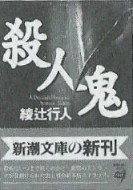
Yukito Ayatsuji / Shinchosha
A great splatter horror by Yukito Ayatsuji, a true leader of the mystery genre. Set in Futabayama, it tells the story across two volumes of a brutal murderer who impulsively massacres huge numbers of people. Severed limbs, gouged-out eyeballs... Holding nothing back in describing the agonies of those who become the killer's prey, this problematic work caused debates amongst Ayatsuji's fans as a mystery author. Of note is the "twin" element that serves as a trick throughout the work, and a character with the supernatural ability to see what other people see in volume two. It's interesting to compare how both Siren and Satsujinki handle the same themes. (Akiyama)

Yoake no Mariko
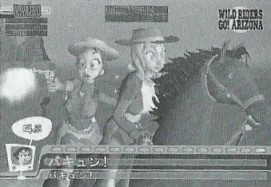
PS2 / 2001 / SCEJ
A karaoke game in which you play American-style characters, reading out the on-screen captions into a USB microphone. All of Siren's main staff members were involved in the creation of this game beforehand. Mr. Toyama says the reason that he wanted Siren to feel like a pure Japanese horror game was because he was asked why, as a Japanese person, he was creating stories set overseas... but I wonder if perhaps it was simple natural progression that led him to look to Japan after making Mariko, a very American game. (Tamura)

688 Attack Sub
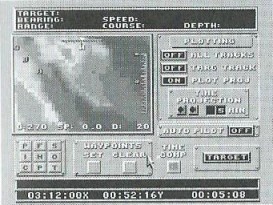
Genesis / 1991 / Sega
A real-time submarine simulator released as software for IBM PC, later ported to the Genesis (the overseas version of the Mega Drive). The game screen is simple, but the excitement of using pings to search out the enemy with sonar makes you subconsciously imagine yourself to be a submariner. This game, with the entertainment that comes from using vague information to locate your enemy, served as inspiration for Siren's sightjack system (refer to interview with Toyama), but it also shows Mr. Toyama's self-professed love of foreign games, having played this hidden gem at the time, when it had not been released in Japan. (Kobayashi)

The Tower of Druaga

Arcade / 1984 / Namco
A trailblazing action RPG in which a golden knight called Gil must climb a giant, 60-storey tower. Each floor has hidden conditions to trigger the appearance of treasure chests, such as "defeat two black slimes", and not being able to beat the game without finding them was a challenge put to the players. Due to its high difficulty, hardcore gamers frequently exchanged tips in real time, creating a "gaming urban legend" that it had been beaten by putting a cardboard box around the screen (to increase concentration; though this really happened). It surpasses the world of a game, causing a flood of realistic and complex emotions... This definitely looks like what Mr. Toyama was aiming for with Siren, by letting the internet enjoy that passion. (Kobayashi)

Flashback
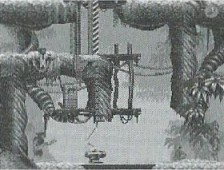
Mega Drive / 1993 / SunSoft
A sci-fi adventure sim, shown completely in 2D polygons (!), in which you control anime-styled characters as you solve the puzzles and mysteries of the game. It was a sequel to Outer World (Super Famicom / 1992 / Victor Entertainment), a game that drew buzz due to its use of full polygons, something quite innovative for the early 90s, and incredibly high difficulty (there were many scenes in which you would die instantly if you didn't solve the puzzle in a matter of seconds), but its hardcore elements even as compared to the first game proved divisive. Since it was, from beginning to end, a memorisation game (though with no unreasonable puzzles), you would end up getting a "game over" time and time again. However, the joy at finding the answer yourself was surprising. Mr. Toyama says this was one of his favourite games - perhaps its innovative gameplay and techniques piqued his interest. (Kobayashi)

ICO
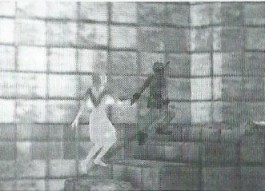
PS2 / 2001 / SCEJ
An action adventure game that tells the story of a mysterious girl and a boy's escape. The way the two hold hands, a simple way of showing "boy meets girl", and the bittersweet story and the expressive worldview mean that it is still supported by many fans. Even in a game like Siren, with its large number of characters, the story can still be seen as one that revolves centrally around lifting the village's curse, showing the sad tale of a boy (Kyoya) and a girl (Miyako) meeting. If you continue to analyse the levels as you pay attention to the changes in Kyoya's expression, you should see that the movie scene at Day 3, 20:00 is one of the top scenes in the game. (Kobayashi)

English Translation by Chelsea

